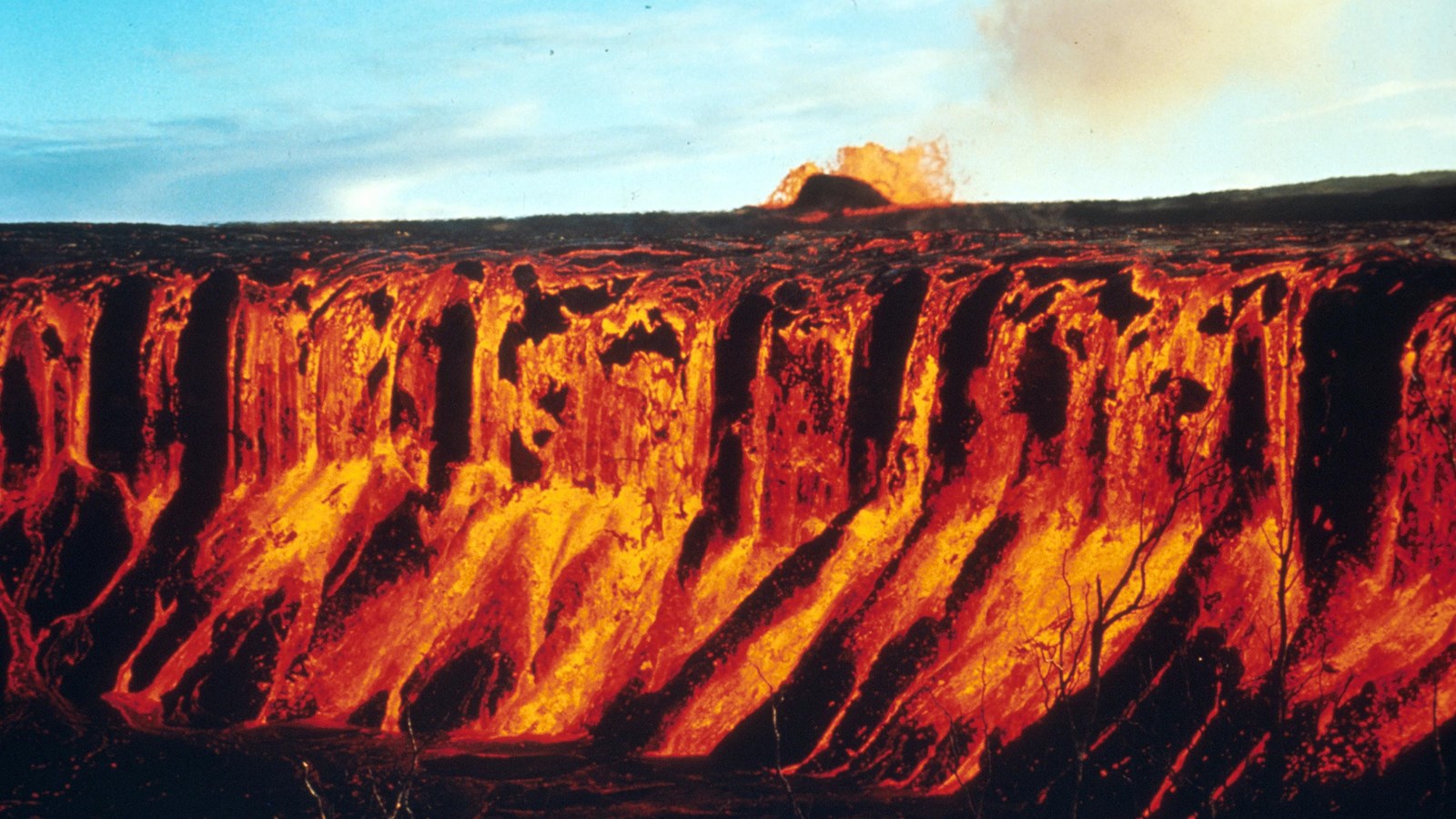Last updated: September 29, 2021
Place
ʻĀloʻi

USGS Photo/D.Swanson
Quick Facts
Amenities
1 listed
Historical/Interpretive Information/Exhibits
By early 1970, the fountaining vent had created the base of the growing Maunaulu lava shield. Overflows from the vent soon consumed the landscape and filled both ‘Ālo‘i and ʻAlae craters. Majestic lava falls plunged 80 feet (24 m) over ‘Ālo‘i crater’s rim. As thin sheets of crust slid over the brink of the falls, thermal updrafts tore them from the flow’s surface; they floated down like autumn leaves blowing in the wind. Lava lakes within the craters overflowed with each new surge from Maunaulu—adding layers and elevation to the surrounding terrain. The dimpled lava mound that grew above ‘Ālo‘i crater is visible to the discerning eye. It sits on Maunaulu’s right flank and rises 260 feet (80 m) above the pre-eruption level.
‘Ālo‘i crater, named for the favorite pig of Kahawali, chief of Puna, was filled during the eruption. When Kahawali refused to race with Pele, she (in the form of lava) chased him to the sea.
‘Ālo‘i crater, named for the favorite pig of Kahawali, chief of Puna, was filled during the eruption. When Kahawali refused to race with Pele, she (in the form of lava) chased him to the sea.
